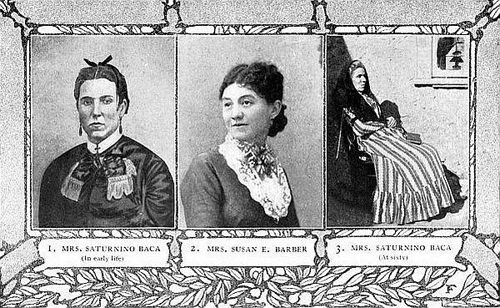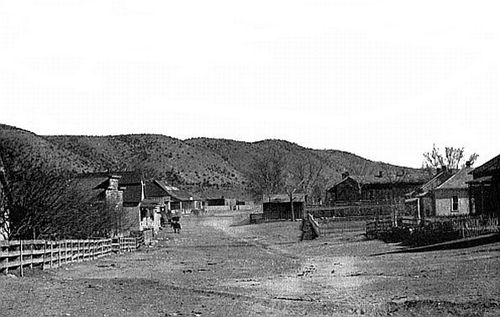
Echoes in the Dust: The Enduring Legends of America
America, a nation forged in a relatively short span of time, nonetheless possesses a rich tapestry of legends that rival those of far older civilizations. These are not merely whimsical tales but potent narratives, often deeply entwined with historical events, that have shaped national identity, reflected cultural anxieties, and celebrated the audacious spirit of a people constantly pushing boundaries. From the colossal lumberjacks of the Northwoods to the gun-slinging outlaws of the Wild West, American legends offer a mirror to our collective soul, revealing what we value, what we fear, and who we aspire to be.
At their core, American legends are often born from a unique blend of frontier mythology, the vastness of an untamed continent, and the relentless march of progress. They speak of individuals who, through extraordinary deeds or sheer force of personality, transcend the mundane, becoming symbols larger than life. These figures, whether real or imagined, populate a landscape that has always demanded resilience, innovation, and a touch of the fantastical.
Long before the West became the ultimate canvas for myth-making, early American folklore began to coalesce around figures like Paul Bunyan, the colossal lumberjack whose feats of strength carved out lakes and forests with his trusty blue ox, Babe. Bunyan personified the industrial might and boundless optimism of a young nation clearing land and harnessing resources. Similarly, Johnny Appleseed (John Chapman) became a legend of gentle perseverance, a real-life pioneer who wandered the Midwest planting apple orchards, symbolizing a harmonious relationship with the land and the promise of future abundance. Even figures like Rip Van Winkle, though a creation of Washington Irving, became embedded in the national consciousness, reflecting themes of change, memory, and the swift pace of American development.

However, it was the untamed, sprawling canvas of the American West that truly became the crucible for the nation’s most enduring and complex legends. The era of westward expansion, marked by rapid change, lawlessness, and the clash of cultures, provided fertile ground for stories of heroes and villains, lawmen and outlaws, pioneers and dreamers. The vastness of the landscape seemed to magnify human exploits, transforming ordinary lives into epic sagas. Here, the line between fact and fiction often blurred, intentionally or otherwise, giving rise to figures whose shadows stretch far beyond their historical footprints.
Among the most potent and historically fraught narratives to emerge from this period is the Lincoln County War. Far from being a simple frontier skirmish, this conflict, which raged in New Mexico Territory between 1878 and 1879, was a brutal power struggle rooted in economic control, political influence, and personal vendettas. It pitted two factions against each other: "The House," led by the formidable Irish merchants Lawrence Murphy and James Dolan, who sought to monopolize the region’s trade and cattle, against a rival coalition headed by English rancher John Tunstall and his partner Alexander McSween.
Tunstall, a gentleman rancher, represented a challenge to The House’s entrenched power. His murder in February 1878 by a posse allegedly working for Murphy and Dolan ignited the war. This act of violence sparked a cycle of retribution that drew in a wide array of figures, from local ranchers and businessmen to hired guns and ambitious politicians. The ensuing months saw assassinations, ambushes, and full-scale battles, including the climactic "Five-Day Battle" in Lincoln, which saw McSween’s house burned to the ground and McSween himself killed.
At the heart of the Lincoln County War, and perhaps its most enduring legacy, stands William H. Bonney, better known to history as Billy the Kid. Initially hired by Tunstall, Billy became a central figure in the Regulators, the vigilante group formed to avenge Tunstall’s death. His reputation as a fearless and deadly marksman grew exponentially during the war, transforming him from a minor outlaw into a notorious legend. His daring escapes, quick wit, and enigmatic personality made him a subject of fascination even in his own time. Was he a cold-blooded killer, as his pursuers claimed, or a young man caught in a maelstrom of violence, fighting for a cause he believed in? The legend of Billy the Kid embodies this very ambiguity, a testament to the complex moral landscape of the frontier. His eventual capture and killing by Sheriff Pat Garrett in 1881 only cemented his place in American folklore, a young life cut short, forever frozen in the amber of myth.
The transformation of figures like Billy the Kid from historical footnote to legendary outlaw was not solely an organic process; it was significantly shaped by chroniclers and storytellers. One such influential voice was Emerson Hough. A prolific author and journalist, Hough was instrumental in romanticizing the American West and its colorful characters. His 1907 book, The Story of the Outlaw: A Study of the Western Desperado, dedicated significant attention to Billy the Kid, Jesse James, and other notorious figures. Hough, like many of his contemporaries, was a powerful architect of the Western myth, often blurring the lines between fact and romanticized fiction to create compelling narratives.
Hough’s journalistic style, combined with his deep appreciation for the epic sweep of the frontier, helped to elevate these figures from local criminals to archetypal symbols of rebellion, individualism, and a certain tragic grandeur. He contributed to the popular image of the Western outlaw as a product of his environment, often driven to lawlessness by injustice or a harsh code of the range. Through his writings, and those of countless dime novelists and pulp fiction authors, the Lincoln County War and its central figures were re-imagined, re-told, and ultimately etched into the collective American memory, often overshadowing the complex historical truths with simplified, dramatic narratives. We often forget that these legends were not just discovered but actively constructed, piece by piece, by writers like Hough who understood the public’s hunger for heroic (or anti-heroic) tales.
Beyond the specific bloodshed of the Lincoln County War, the West produced an astonishing gallery of legendary figures. There was Jesse James, the Confederate guerrilla turned bank and train robber, whose legend oscillated between ruthless bandit and Robin Hood figure. Wyatt Earp and his brothers, along with Doc Holliday, became immortalized by the Gunfight at the O.K. Corral, a brief, violent skirmish transformed into a seminal moment in the battle between law and chaos. Calamity Jane, a rough-and-tumble frontierswoman, became a symbol of female independence and resilience in a man’s world, her life embellished with tales of daring horsemanship and sharpshooting. Each of these figures, through books, films, and oral tradition, transcended their historical realities to become enduring symbols of the Wild West.
While the dusty trails of the Old West may have faded, America’s capacity for generating legends has not. Modern legends, though different in scope, continue to capture our imagination. Cryptids like Bigfoot and the Mothman speak to our enduring fascination with the unknown and the wild places that still exist. Urban legends, passed along through whispered tales and internet memes, reflect contemporary anxieties and moral lessons. Even figures from recent history, like Elvis Presley or John F. Kennedy, have had their lives and deaths transformed by myth-making, demonstrating our collective need to find deeper meaning and narrative arcs in the lives of public figures.

Why do these stories, often centuries old or rooted in distant conflicts, continue to captivate us? Perhaps it is because they offer a sense of continuity in a rapidly changing world. They provide archetypes that help us understand human nature, morality, and the struggle between good and evil. American legends, particularly those from the frontier, speak to a deep-seated desire for self-reliance, freedom, and the courage to face adversity head-on. They are tales of individuals defining themselves against vast backdrops, embodying the very spirit of a nation built on expansion and reinvention.
Ultimately, American legends are not static relics of the past but living narratives that evolve with each retelling. They are the cultural bedrock upon which a nation built its identity, reflecting its triumphs, its contradictions, and its enduring dreams. From the epic struggles of the Lincoln County War and the enigmatic allure of Billy the Kid, shaped by the pens of chroniclers like Emerson Hough, to the modern myths that populate our digital age, these stories remind us that the human need for meaning, heroism, and a touch of the extraordinary remains as powerful as ever. They are the echoes in the dust, whispering tales of who we were, who we are, and who we might yet become.


